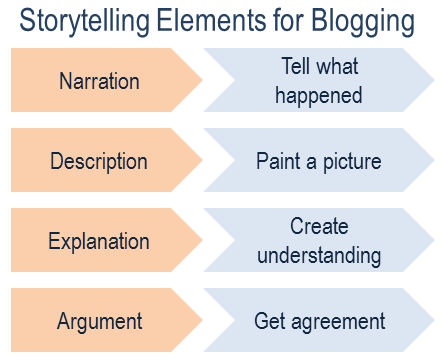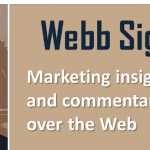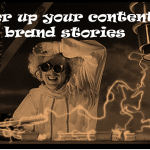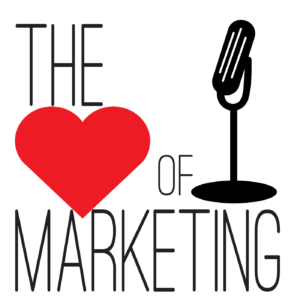There is good news and not-so-good news for business bloggers.
The good news is your blog is one of the most powerful content marketing channels you have for engaging prospective customers and turning them into leads that convert to sales. One study found that small businesses that blog get 126% more leads than small businesses that do not.
Blogs are now a mainstream source for consumers to get information about companies and products. According to Hubspot, 81% of U.S. consumers place their trust in the information and advice they read in blogs. But the business opportunity is not without challenges.
One challenge is to break through the tonnage of content choices your prospects face. Today there are 6.7 million people publishing content on blogging websites and another 12 million writing blog posts using social networks. That means you are not just competing for mindshare within your market. You are competing with every other publisher on the Web to get the attention of your prospects.
Your challenges don’t end there. A study of Slate online magazine found that 38% of Web visitors bounce from the website before reading a word. And most visitors who stayed only read 50% of the article. The study confirmed what many content marketers have suspected. You are in a fight to win the attention of your audience.
How can you create blog posts customers will want to read?
Assuming you have a customer-focused content strategy and an editorial plan for your blog, there is one more thing you can do. Be a storyteller.
When you add storytelling elements to your narrative, you stand out from the crowd of other business bloggers in connecting with your audience. Here is what storytellers do.
Building blocks for a reader-friendly blog post
Stories start with structure. The classic essay writing structure is a familiar model to readers, so it works well for blogging. It has a simple three-part structure with a beginning, middle and end. Readers can easily follow your flow of ideas. Deviate from it and you risk confusing them and losing them. Here is what it looks like.
Introduction. Let the reader know the topic and main idea in the opening paragraph and build on it from the general to the specific. A good introduction piques interest and sets expectations for what is coming next.
Supporting paragraphs. The following section expands on your main idea, giving more information to support it. You can do this by using:
- Anecdotes
- Metaphors and analogies
- Facts and statistics
- Examples and case studies
Conclusion. In closing, you want to lead the reader to the final points that support your main idea. A strong close leaves no doubt about your position. The only thing worse than having a reader disagree with you is to leave them wondering what your main point is. Don’t waffle.
Just following this formula puts you ahead of many bloggers in terms of clarity and focus. It is a simple and serviceable approach that works well for skimming content on the Web. But how can you build more story into it?
Storytelling elements that engage prospects
Once the structure of your blog post is in place add storytelling to the narrative to hold the reader’s attention. Storytelling elements give her a variety of ways to process information with both the emotional and analytical parts of the brain. Here are four ways to do this in your blog content from Writing for the Web by Lynda Felder.
NARRATION
Narration is the straightforward storytelling approach used by most bloggers. It lays out a sequence of facts like the journalist’s reporting of a story. It follows the 5-Ws: who, what, when, where, why. On a blog it is commonly used in:
- Bios
- Interviews
- Case studies
- A personal account
DESCRIPTION
Description adds texture and emotion to your story by appealing to the senses. Descriptive copy is commonly used in online product descriptions. But you can also use it to involve your blog readers by adding look, taste, touch, sounds and smell to your narrative.
EXPLANATION
Storytellers use explanatory content to inform readers by providing definitions, comparisons, facts and statistics. In blogs this is commonly done in three ways:
- Explaining the process of how something works
- Classification, which groups ideas into categories or divides them into smaller parts
- Pointing out differences and similarities by comparing and contrasting ideas or objects
ARGUMENT
Your blog is the ideal platform for taking a controversial position on a topic. In making an argument, you give reasons to support your position using three types of persuasion in your writing:
- Moral argument, which appeals to the reader’s conscience, ethics, morals, standards, values or principles
- Emotional argument, which appeals to the reader’s beliefs, passions, sympathies or sentiments
- Logical argument, which appeals to the reader’s intellect
Emotional and logical arguments are most effective to win the support of your audience. A moral argument is the most effective way to earn credibility with your reader.
The real power of these storytelling elements is to use them in combination with each other, rather than limiting yourself to just one. Here is an example of storytelling from the movie Meatballs. See how many of these elements you recognize.
Better than the average blogger
Most readers don’t make it past the halfway mark of the average blog post. I’m guessing you don’t want to be average. Average won’t get you the leads you need to make your blogging efforts worthwhile. Being a storyteller and engaging prospective customers will.













Speak Your Mind